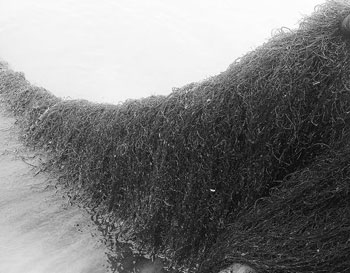The new rape products are resistant and almost eradicate root swelling disease.
Original title: new resistant varieties make rape root swelling disease close to "root removal"

Disease incidence of disease-resistant strain and control in the field Zhang Chunyu supply map
In China, for the important oil crop and Brassica napus of Cruciferae, the spread of root swelling disease has been accelerated in recent years.
The rape research team of Huazhong Agricultural University, led by Fu Tingdong, the father of Chinese hybrid rape and academician of the Chinese Academy of Engineering, has come up with a new plan to solve this problem-- using new varieties resistant to root swelling as a "sharp weapon" for prevention and control.
Recently, the breeding and application of new rape varieties resistant to root swelling disease were held in Zhijiang City, Hubei Province. At the demonstration site, the participating experts observed the growth of the new disease-resistant strain cultivated by the research team in the epidemic area, and randomly sampled and identified it. The identification results of the expert group showed that the resistance rate of the new disease-resistant strain ZHE-226 reached 100%, and it was in the leading position in China in terms of resistance to root swelling disease.
"breeding resistant varieties is the most effective and economical solution to root swelling disease." Wang Jijun, director of the Oil Department of the National Agricultural Machinery extension Center, commented.
Root swelling disease: a stubborn disease in Brassica plants
Root swelling disease is a worldwide soil-borne disease with strong infectivity, which is exclusively parasitic on Brassica crops. For a long time, traditional agricultural prevention and control is very difficult to be effective, in other words, root swelling disease is "preventable and untreatable."
Since the disease was first discovered in Russia in 1873, it has spread to various Brassica producing areas all over the world, including most European countries, Australia, Canada, Japan, South Korea and China.
After infection of Brassica crops, there are usually symptoms of seedling death, or plant growth retardation and dwarfism in the adult stage. the outer leaves often wilt at noon, yellow and wither in the later stage, and sometimes the whole plant withered.
According to statistics, 70% of the cultivated area of cabbage in Victoria, Australia is affected by the disease. The statistical results in 2011 show that all the major producing areas of Korean cabbage are affected by root swelling disease, with an annual damage area of 38% of the total planting area and an economic loss of 125.5 billion won.
Why does root swelling disease become a chronic disease of Brassica crops?
"the pathogen has survived for a long time, living in the soil for more than 10 years," Zhang Chunyu, a professor at the School of Plant Science and Technology of Huazhong Agricultural University, explained to China Science Daily. "the pathogen mainly spreads by means of running water, transportation of diseased seedlings and agricultural operations, so the speed of transmission is fast."
This means that Rhizobium can spread near or long distance by attaching to the surface of agricultural machinery and transportation, and it spreads more rapidly with the improvement of agricultural mechanization.
In recent years, root swelling disease has begun to seriously threaten the normal production of Brassica crops in China. According to incomplete statistics, the affected area of the country is at least 35 million mu (including 30 million mu of rape), the average yield loss is 20% to 30%, and the yield loss of serious fields is more than 60%.
Sichuan Province is the largest disease area of rape root swelling disease in China, with an area of more than 3 million mu. With the continuous improvement of the degree of mechanization, the disease is radiating rapidly around, resulting in varying degrees of distribution in Hubei (Yichang, Jingmen, Jingzhou), Yunnan, Guizhou, Shaanxi, Hunan, Anhui and other places.
A permanent and economical solution
How to curb the spread of root swelling disease? How to cure this infectious disease of Brassica? Fu Tingdong proposed that the disease should be eliminated from the source.
It is understood that after factory cultivation of disease-free seedlings, mechanized transplanting of rape can inhibit root swelling disease by 95%, and the cost per mu needs to be increased by nearly 70 yuan per mu; the combined application of calcium cyanide during transplanting and direct seeding can significantly increase the soil pH value, and when the pH value reaches 7.2, it can basically inhibit the damage of bacteria, but the cycle is longer, and the cost per mu is increased by nearly 60 yuan per year. Such as the use of chemicals for prevention and control, first, the cost per mu is more than 200 yuan, second, the effect is limited, and there is pollution to water and soil, resulting in environmental deterioration.
In contrast, planting varieties resistant to root swelling is one of the most fundamental and economical ways to prevent and cure root swelling.
However, China still lags behind in the innovation and utilization of disease-resistant resources, especially in the breeding of new disease-resistant varieties. A few years ago, Fu Tingdong pointed out that there was a lack of effective prevention and control measures in production, especially the lack of disease-resistant varieties of rape, and there was a tendency for root swelling to break out in the main producing areas of rape in China. If effective measures are not taken as soon as possible, it will certainly cause great harm to China's rape industry.
From then on, Fu Tingdong began to guide the research team in the breeding of new rape resistant varieties.
"some international research institutions have obtained some valuable disease resistance resources through a large number of screening of cabbage, cabbage, rape and other resources, among which turnip contains the most disease resistance sites and is most widely used in disease resistance breeding." Zhang Chunyu said.
Zhang Chunyu cooperated with Park Zhongyun, a professor of Shenyang Agricultural University, to find the material for resistance to root swelling on turnip. After repeated crossing, backcrossing and self-crossing with "Huashuang 5", a new normal disease-resistant strain ZHE-226 with oil content of 40.27%, glucosinolate content of 20.78 umol / g and erucic acid content of 1.39% was bred.
The results showed that the new rape strain ZHE-226 showed dominant resistance to the physiological races in the root swelling areas such as Huangshan in Anhui, Zhijiang in Hubei and Badong in Enshi.
In the demonstration site of Zhijiang City, the expert group randomly sampled and identified the new resistant varieties: 311 resistant strains, 311 resistant strains, 100% resistant rate, and 407 control varieties, 406 diseased plants, with an incidence of 99.75%. The expert group believes that the new strain is immune resistant to root swelling disease and is in a leading position in China in terms of root swelling disease resistance, and its innovation and breeding provide effective resources for rape disease resistance breeding in China. It has demonstration and promotion value in the area where root swelling disease occurs, and is of great significance to resist the development and spread of root swelling disease.
Expect more disease-resistant varieties
Brassica is one of the most important crop species in China, with an annual planting area of 375 million mu, including 273 million mu of Brassica vegetables (including Chinese cabbage, cabbage, etc.), accounting for 40% of the total vegetable area; rape area of 102 million mu, providing China with 40% of self-sufficient edible oil.
Although root swelling disease has threatened the development of rape industry in China, Zhang Chunyu said that as long as the research on the inheritance and molecular mechanism of root swelling disease resistance is continuously strengthened, systematic cultivation of rape varieties resistant to root swelling disease can fundamentally eliminate the threat to the healthy development of rape industry.
The successful breeding of a new rape variety ZHE-226 is just the beginning, and the rape team of Huazhong Agricultural University has aimed at the next step.
"because of the diversity of physiological races of root swelling pathogen, and the strong race specificity of single gene resistant materials, long-term planting of single gene resistant varieties will lead to the loss of resistance." Zhang Chunyu said that only by polymerizing breeding with multiple resistance sites and cultivating excellent rape varieties that are resistant to multiple physiological races of root swelling disease at the same time can the persistent harm of root swelling disease to rape production be fundamentally solved.
"because turnip (ECD04) contains many different disease resistance sites, according to our inoculation results, it showed strong resistance to many different physiological races of Rhizobium." Zhang Chunyu said, "in the previous study, we also obtained rape near-isogenic lines with other different disease resistance sites, which will lay a solid foundation for our future disease resistance site polymerization breeding."
Related
- A course of planting techniques and methods on how to grow carrots
- How to plant the latest tulips?
- Is it better to pick tea in the morning or in the afternoon? When is the best time for tea to be picked? what is the third or fifth tea?
- Launch Yuanxiao Happy combination Haocha + Tea Yuan healthy Taste
- Penghu Tourism "Fireworks 20 Parade with You"
- 2022 West Lake Happiness holds "Digital Revitalization Voucher" and draws iphone13 and laptop.
- Banqiao Fuzhou social houses are designed to change start-up combined with police elimination to create a safe and livable environment
- The convenient measure of "mechanical weeding" in Xinbei has been abused and the Agriculture Bureau has imposed heavy penalties on the illegal land consolidation.
- Changgeng University Joins Hands with Four Memory Factories to Rescue Memory Talent Shortage
- The list of Taiwan's top 100 MVP managers is listed by the Director-General of the Farmers' Association of Sanxia District.



